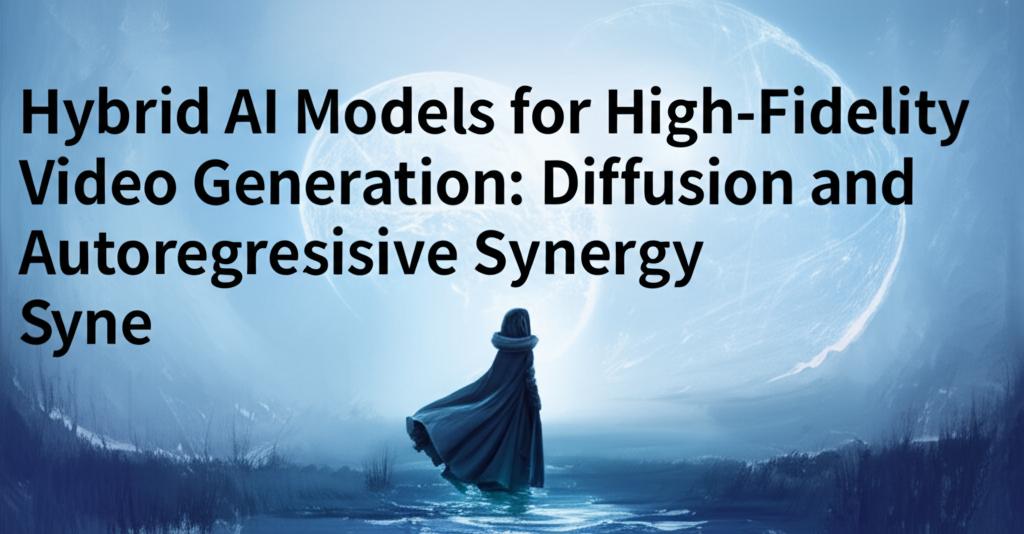The quest for generating highly realistic and temporally coherent video sequences has led to significant advancements in generative AI. Among the most promising approaches is the synergistic combination of diffusion models and autoregressive models. This hybrid strategy aims to harness the distinct strengths of each architecture to overcome their individual limitations, paving the way for a new generation of high-fidelity video synthesis.
Diffusion models have demonstrated remarkable success in generating high-quality images with intricate details and photorealism. Their ability to learn complex data distributions by progressively adding and removing noise makes them adept at capturing fine-grained visual textures and appearances within individual frames. When applied to video, diffusion models can excel at producing visually stunning frames. However, maintaining long-range temporal consistency and coherent motion across many frames can be challenging for pure diffusion-based video generators. They sometimes struggle with ensuring that objects and scenes evolve smoothly and logically over extended durations.
On the other hand, autoregressive models, such as transformers, have a strong aptitude for modeling sequential data and capturing long-term dependencies. In the context of video, they can effectively learn the temporal relationships between frames, ensuring that motion is smooth and events unfold in a coherent manner. Autoregressive models predict subsequent frames based on previously generated ones, making them inherently suited for maintaining temporal consistency. However, generating very high-resolution frames with the same level of fine detail as diffusion models can be computationally intensive and sometimes lead to visual artifacts or a lack of perceptual richness compared to state-of-the-art diffusion image generators.
The synergy between diffusion and autoregressive models in a hybrid framework offers a compelling solution to these challenges. By integrating these two paradigms, researchers are developing systems that leverage the best of both worlds. Typically, in such hybrid architectures, one model might be responsible for generating the overall temporal structure and coarse details, while the other refines the visual quality and adds intricate details.
Several strategies for combining these models have emerged. For instance, an autoregressive model might be used to generate a sequence of latent representations or keyframes that define the overarching narrative and motion flow of the video. These representations then guide a diffusion model, which synthesizes the high-resolution, detailed frames conditioned on this temporal guidance. This division of labor allows the autoregressive component to focus on temporal coherence and global consistency, while the diffusion component ensures high visual fidelity for each frame.
Another approach involves using diffusion models to generate short, high-quality video clips or keyframes, and then employing an autoregressive model to extend these clips or interpolate between them, ensuring smooth transitions and logical progression. Some models might also interleave these processes, using autoregressive steps to predict future latent codes which are then decoded into full frames by a diffusion process, iterating to build up the video sequence.
Recent advancements in this domain are focused on optimizing this interplay. This includes developing more efficient ways to condition diffusion models on temporal information generated by autoregressive components and exploring novel architectures that allow for seamless information flow between the two types of models. Researchers are also working on improving the controllability of these hybrid systems, enabling users to guide the video generation process with text prompts, initial images, or even high-level scripts.
The benefits of this hybrid approach are manifold: improved temporal consistency over long video sequences, enhanced per-frame visual quality and realism, and better handling of complex motions and scene dynamics. As these models continue to evolve, we can expect to see even more sophisticated and versatile tools for creating photorealistic and coherent video content, with applications spanning entertainment, virtual reality, simulation, and education. The fusion of diffusion's detail-rich synthesis and autoregression's temporal mastery is undoubtedly pushing the boundaries of what's possible in AI-driven video generation.

